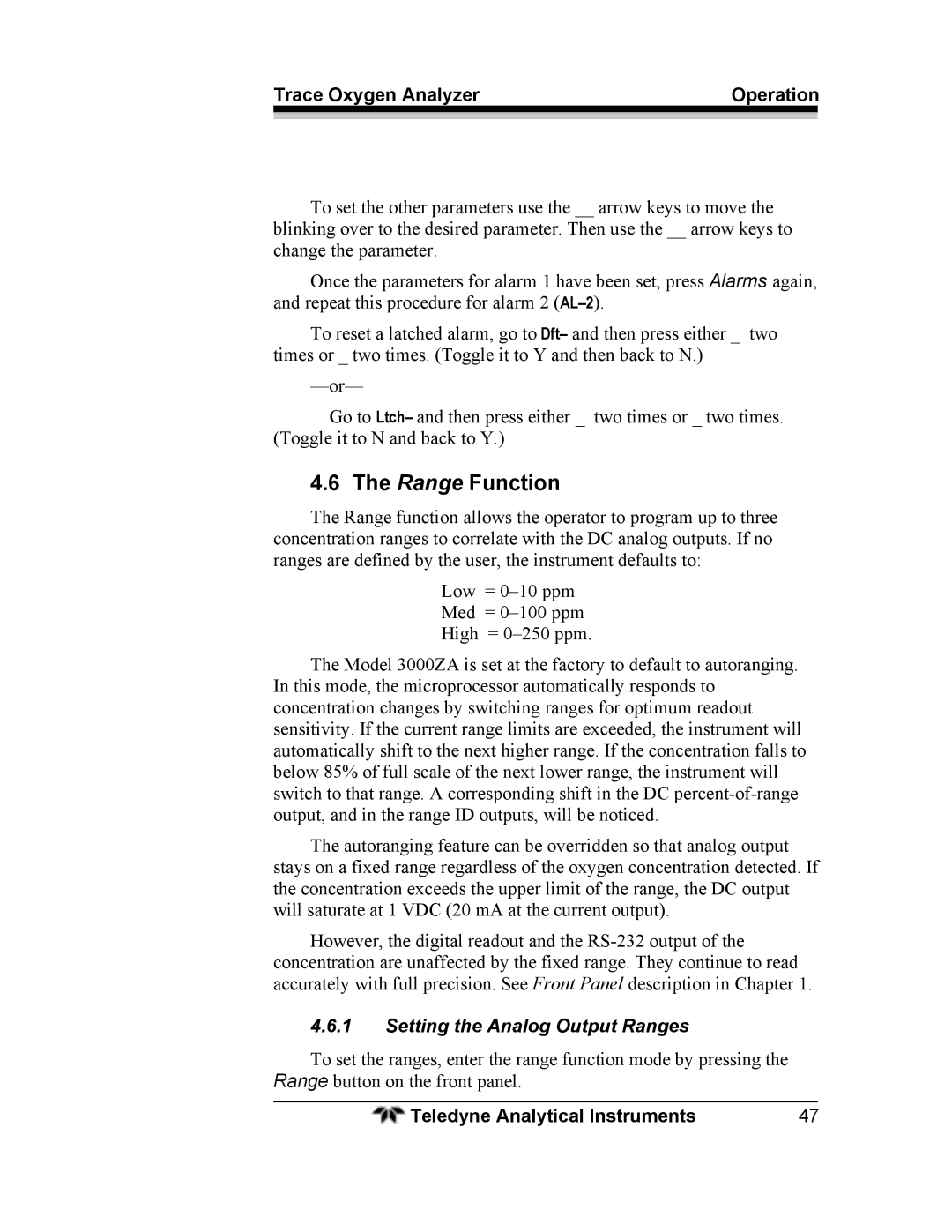Trace Oxygen Analyzer | Operation | |
|
|
|
To set the other parameters use the __ arrow keys to move the blinking over to the desired parameter. Then use the __ arrow keys to change the parameter.
Once the parameters for alarm 1 have been set, press Alarms again, and repeat this procedure for alarm 2
To reset a latched alarm, go to Dft– and then press either _ two times or _ two times. (Toggle it to Y and then back to N.)
Go to Ltch– and then press either _ two times or _ two times. (Toggle it to N and back to Y.)
4.6 The Range Function
The Range function allows the operator to program up to three concentration ranges to correlate with the DC analog outputs. If no ranges are defined by the user, the instrument defaults to:
Low = 0–10 ppm Med = 0–100 ppm High = 0–250 ppm.
The Model 3000ZA is set at the factory to default to autoranging. In this mode, the microprocessor automatically responds to concentration changes by switching ranges for optimum readout sensitivity. If the current range limits are exceeded, the instrument will automatically shift to the next higher range. If the concentration falls to below 85% of full scale of the next lower range, the instrument will switch to that range. A corresponding shift in the DC
The autoranging feature can be overridden so that analog output stays on a fixed range regardless of the oxygen concentration detected. If the concentration exceeds the upper limit of the range, the DC output will saturate at 1 VDC (20 mA at the current output).
However, the digital readout and the
4.6.1Setting the Analog Output Ranges
To set the ranges, enter the range function mode by pressing the Range button on the front panel.
Teledyne Analytical Instruments | 47 |
